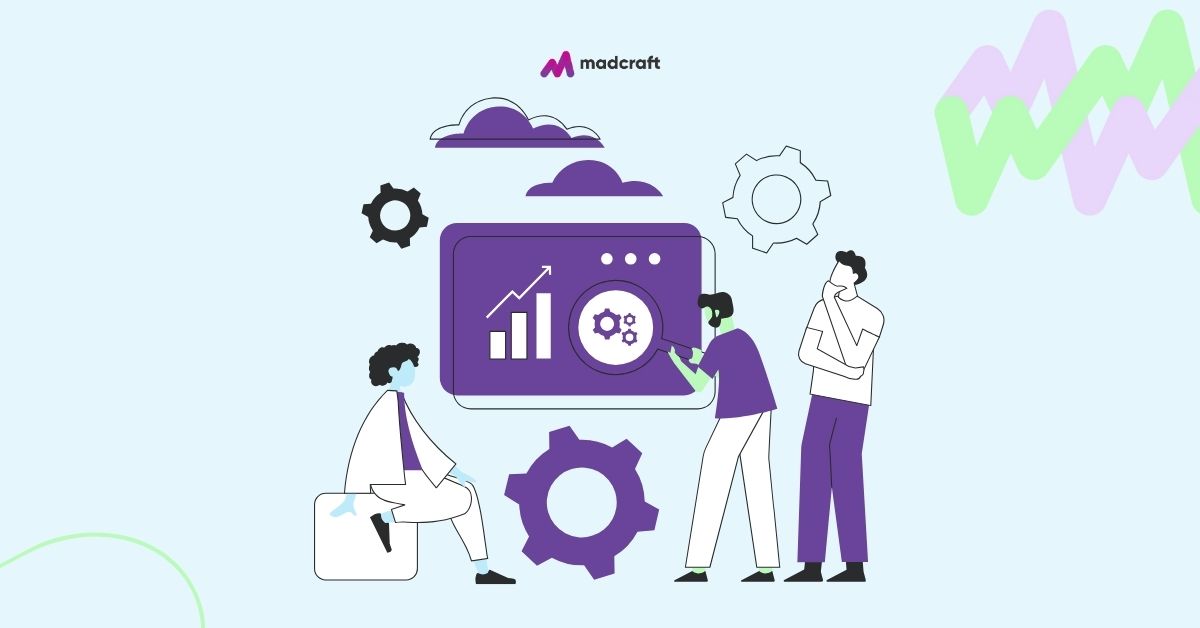Team Madcraft


It was a foggy morning, the kind that clings to your clothes and makes you wonder if the sun will ever break through. I was at my desk, sipping a bitter cup of coffee, when the call came in. It was another case—another mystery waiting to be solved. This time, it was a doozy. The client on the other end of the line was frantic: “People are leaving the site as soon as they land. We don’t know why! We need answers!”
They always want answers. And when they don’t have them, they call me — the UX Detective (expert in detailed UX design and investigation).
The bounce rate had skyrocketed overnight, and nobody knew why. The marketing team was pointing fingers at the content, the developers were swearing it wasn’t the code, and the client was losing patience. It was up to me to solve the mystery, to comb through the digital debris and find the culprit.
I cracked my knuckles, opened my toolkit, and got to work.
Every detective knows the importance of a timeline. When did the bounce rate start to rise? Was it gradual or a sudden spike? I dove into the analytics, scanning the graphs for patterns. There it was—a sharp uptick, starting last Monday.
“What changed on Monday?” I asked the client.
“We launched a new landing page,” they replied, uncertainty in their voice.
I jotted it down in my notebook. The landing page—our first suspect.
It was time to bring in the usual suspects:
Each of these had a motive. But only one could be guilty.
I started with the landing page. It was clean, modern, and, at first glance, innocent. But something was off. I ran a few tests—eye-tracking studies, heatmaps, the works. That’s when I found it: a call-to-action button hidden in plain sight, camouflaged by the background. Users were landing on the page, but they weren’t finding the next step. They were lost, and when people are lost, they leave.
The landing page was looking guilty, but I wasn’t ready to close the case just yet. I moved on to the navigation menu.
It was as innocent as they come—clear, concise, and easy to use. This wasn’t our guy.
Next, the pop-ups. They had an alibi—they were set to appear after 30 seconds, and the bounce rate was happening before they even had a chance to show up. I crossed them off the list.
Load time was another dead end. The site was fast, smooth as a jazz tune on a summer night.
The last suspect was the content. I combed through the text, reading it as if I were a first-time visitor. It was well-written, but dense. Maybe too dense. But was it enough to scare people off?
I was deep in the investigation when a red herring appeared, trying to throw me off the trail. The client mentioned they’d recently added auto-playing video to the homepage. I dug into it, thinking I’d found my culprit. But the data didn’t lie—most users weren’t even reaching the video before they bailed. Another dead end.
As I sifted through the remaining clues, another red herring popped up: a distracting banner ad, flashy and unrelated. It was a distraction, sure, but it wasn’t enough to account for the entire drop-off. It was just another piece of noise in this cacophony of confusion.
I returned to the landing page, reexamining the evidence. That’s when I realized the truth. The culprit wasn’t one thing—it was a combination, a perfect storm of poor user interface decisions.
The landing page had too many elements competing for attention. The call-to-action button was too subtle, almost invisible. The content, though well-crafted, was overwhelming for a first-time visitor. And though the navigation was clear, it wasn’t immediately obvious where to go next.
The site was like a maze with no clear exit. And when users can’t find their way, they leave. Fast.
The landing page was guilty as charged. But the crime couldn’t be pinned on just one element—it was a conspiracy of design flaws, working together to drive users away.
Case Closed: The solution? Simplify. Make the call-to-action button stand out, cut down on the clutter, and guide the user with a clear, intuitive path. The site didn’t need more flash; it needed more function.
As I packed up my case file, I couldn’t help but think about all the other sites out there, haunted by high bounce rates and poor user experience. I knew my job was far from over. There would always be another mystery, another case to crack.
But for now, the bounce rate was back under control, and the site was ready for visitors. I tipped my hat to the client and disappeared into the fog, ready for the next call.
Until next time, keep your designs clean, your users happy, and your bounce rates low.